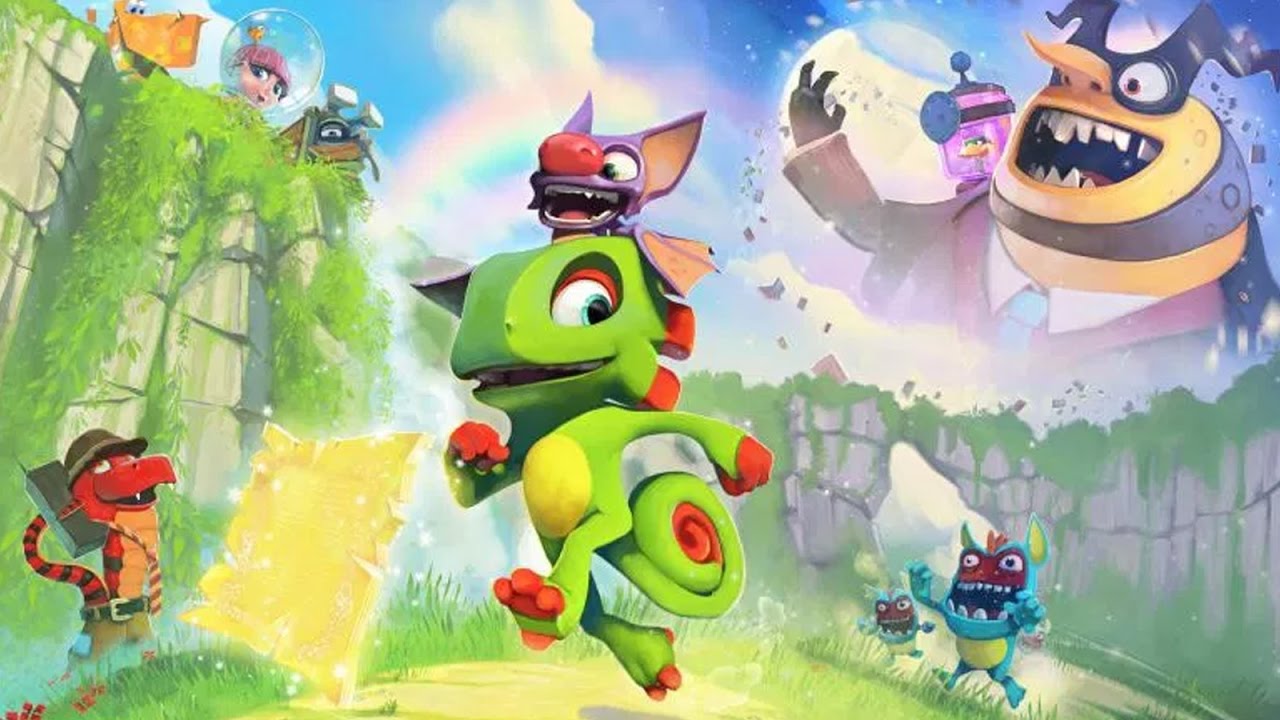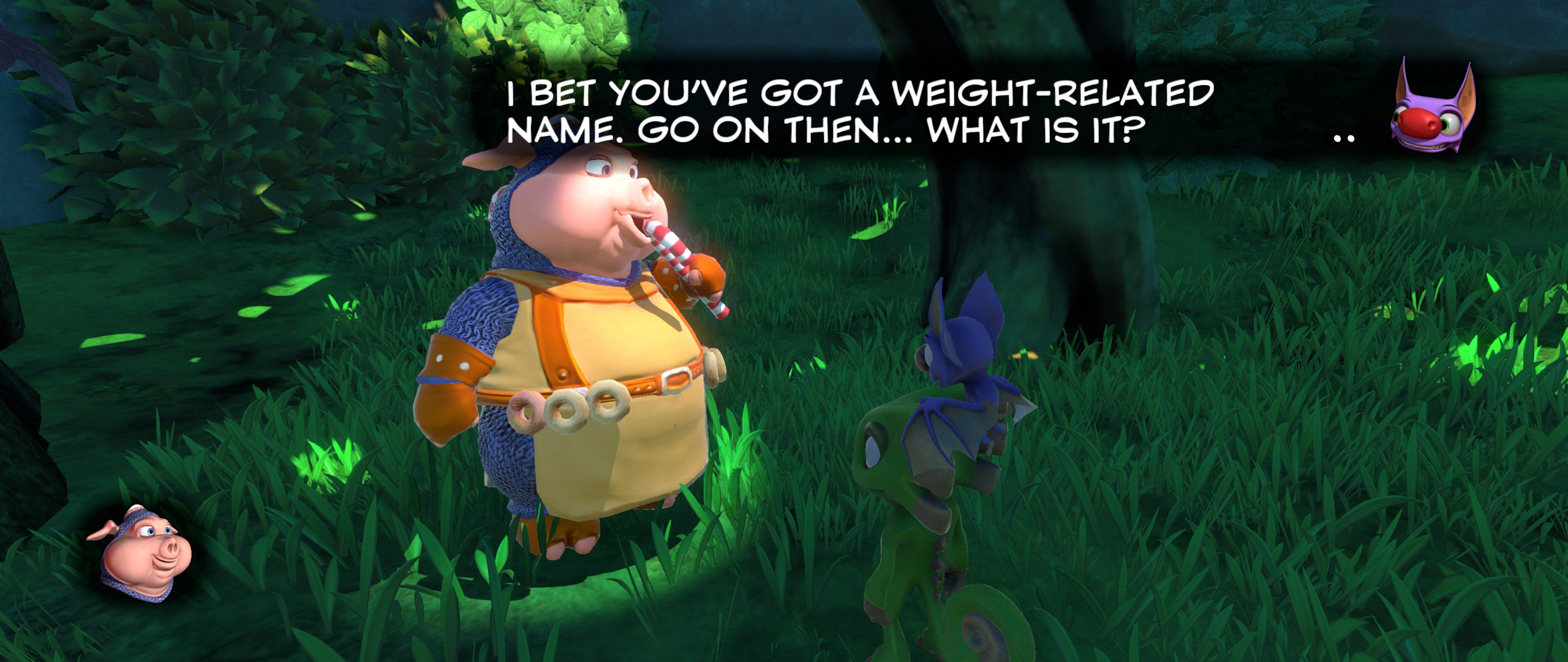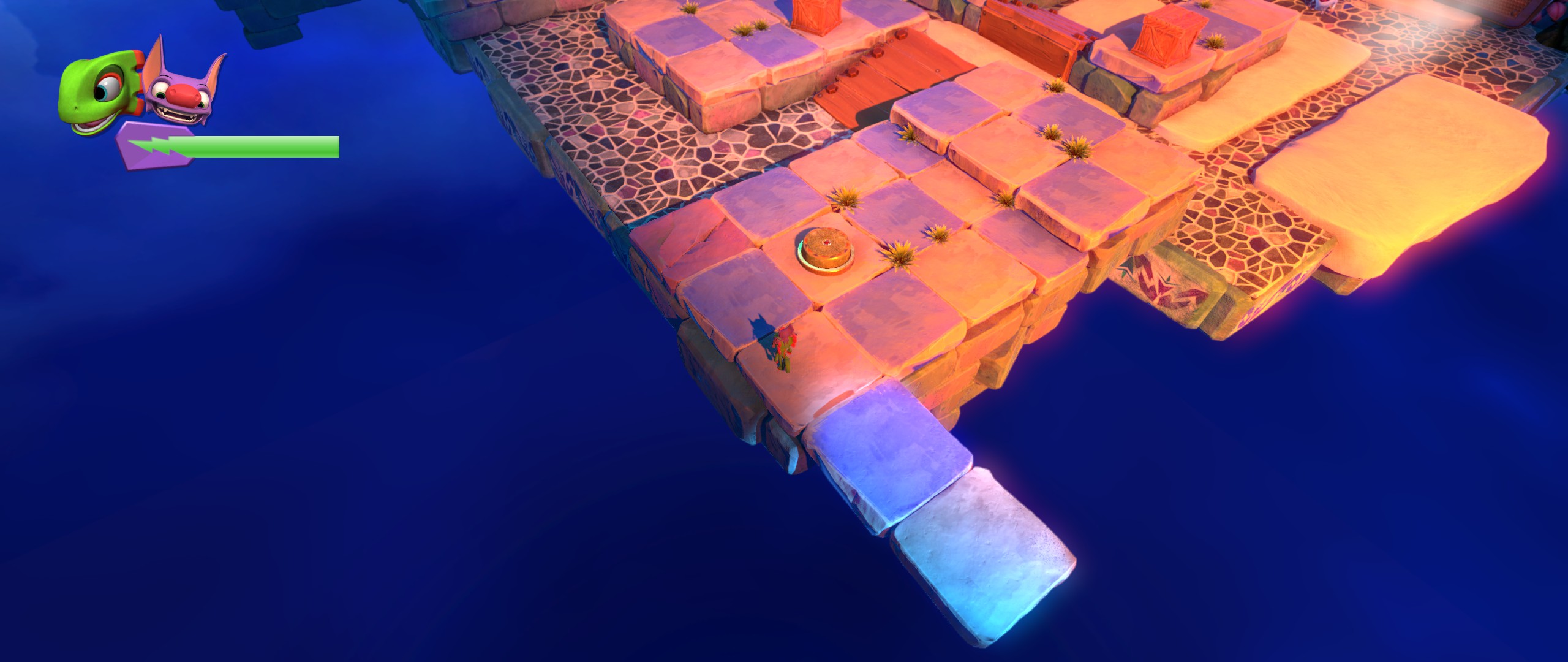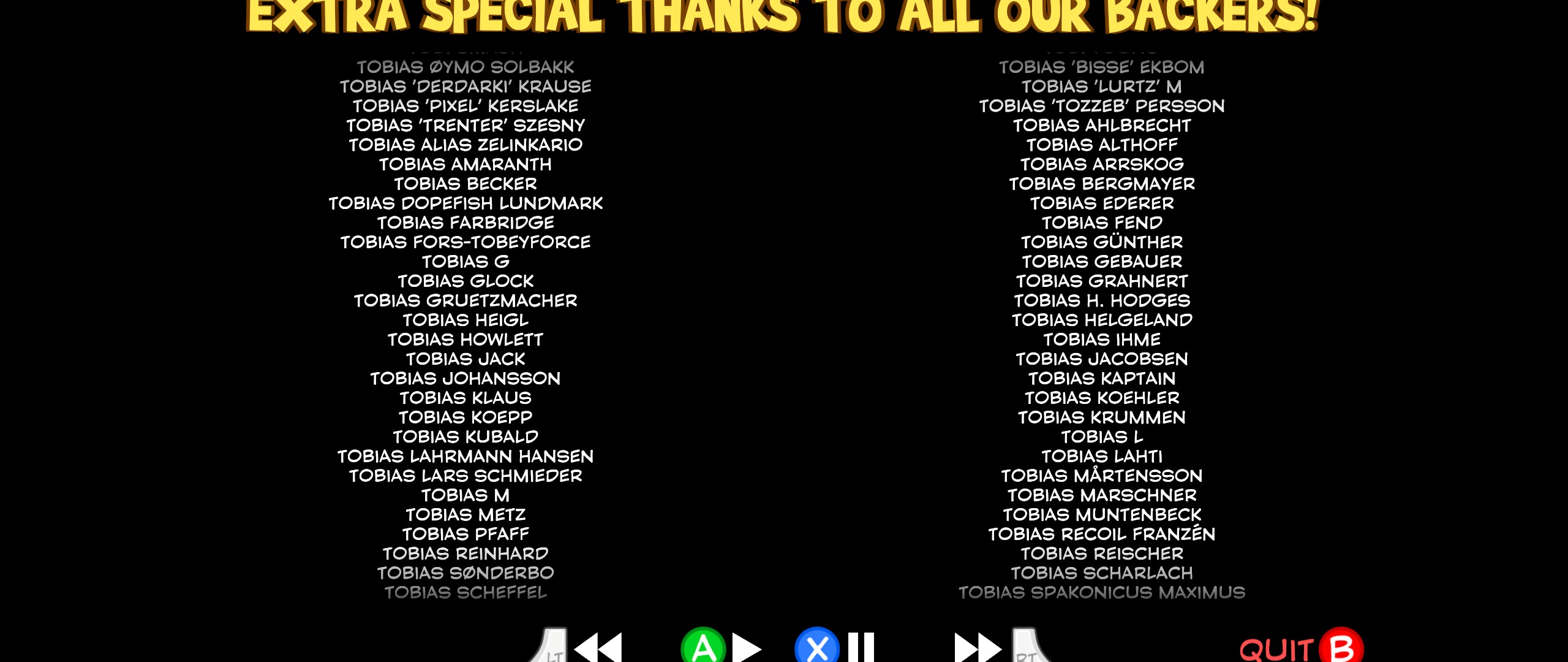PERSONAL
2,290
Yooka-Laylee
5 years ago - Edited 5 years ago
I just finished playing the game
Yooka-Laylee, so I want to talk about it a bit!
![]()
I first played this game a couple of years ago, I think soon after it came out? I don't know how I heard about it. I didn't enjoy it at the time and quit before finishing due to some fairly severe movement-related bugs (which have thankfully since been completely fixed). I'd also heard it was deliberately developed to be a sort of spiritual successor to Banjo-Kazooie, to play on the childhood nostalgia of people who grew up with that and longed for similar games to be made again, but since that game was never a part of my childhood (due to chance rather than lack of interest), I felt like this 'wasn't meant for me' or something.
Still, I decided to give it another go after it came up in a comment recently. I just finished after a play time of around 20 hours, and I'd say I had fun! It really grew on me over time. It's interesting playing something that looks so modern but plays so old-fashioned in a lot of ways.
The story's such a flimsy Excuse Plot that doesn't really make sense, and the characters are all ridiculous (except for the straight-man protagonist) and often break the fourth wall. But I like the result of that: it just feels like silly fun, an escape. It doesn't
say anything meaningful, but it isn't the sort of thing that feels like it should.
It's very
British, as I assume Banjo-Kazooie was as well? The dialogue plays with that in a way that makes me wonder how it'd be read by non-British people; would they see a Kraken talking like an uncouth northerner as amusing, or confusing? Or would they just perceive it as a fantastical, random personality invented by the developers? It's something I've wondered when adding Britishisms to my own games.
![]()
The way that characters talked - in (huuuge) text with an animated head wiggling as it repeated a few grunts unique to that character - is an interesting way of portraying dialogue, which I assume/vaguely remember is copied from Banjo-Kazooie, but which I haven't seen anywhere else. So that's unique. It was sort of odd though how these dialogue bits were completely detached from the in-game models, which played their looping idle animations and stared into space, completely unaware of who they were supposedly talking with. I never had any
issues with it or anything, I just found it an interesting design choice. I suppose it worked because of the whole not-exactly-taking-itself-seriously tone of the whole thing.
Bosses also talked in these dialogue boxes mid-battle, which was interesting, though disruptive at times. Each of the bosses had their own silly personality (though I found what you had to do to start the fifth world's boss battle profoundly uncomfortable to the point where I feel slightly sick remembering it), and they were all optional, which I felt was an interesting way of handling those.
The sense of humour read to me as deliberately bad, in a 'dad jokes' kind of way. There's something about it that made me assume whoever wrote the dialogue was getting on in years, though maybe that's just my perceptions! It lent a certain tone to the game that I felt was most appropriate for what it is; it would have felt wrong if it was clearly made by young people, with all their whippersnapperin' memes and slang and what-have-you, get off my lawn.
One of the NPCs was Shovel Knight, which surprised me, since I'm not a part of the whole games developer community (one day!!). There was another NPC I got the impression was from another game too - some elven-ish space girl - but I don't know what.
The main villain was an odd mashup of corporate businessmen and bees, of all things, though the latter connection didn't click until right at the end. A lot of design choices made sense after that (like that weird black band around his 'neck', hexagons everywhere, the name 'Hivory Towers', or his name, 'Capital B'), but it wasn't clear to me earlier! While you only actually face him right at the end, he makes his presence known through random dialogue snippets as you roam around the hub world (which I also faintly remember as a thing from Banjo-Kazooie, maybe, based on what a friend I had as a child said about it?). It felt so satisfying to finally face him, then; like we already had an existing relationship, and like it
meant something to have reached a face-to-face encounter. It gave me ideas about how to portray villains in my own work.
I had to attempt the final battle like a dozen times though because it felt like such an extreme difficulty spike. Oh well; it would have been worse if it were underwhelming.
I found this environment ("Icymetric Palace") particularly interesting, since it's similar to what I've been trying to do with Divine Dreams:
![]()
Something I really wish the game had was a
map, since I rely heavily on those. It didn't, which meant I spent a lot of time wandering around lost, and I probably won't go for 100% completion because I don't like the idea of going and looking in every nook and cranny without any way to track where I've already explored. I did finish all three of the Sypro Reignited games completely, but that's largely because I remembered where everything was from playing the originals with childish excitement many years ago (plus they did have maps). I'd probably have stuck with this for longer if I were younger and had more time.
Bosses also didn't have HP bars, so there were a few times where I wasn't sure whether what I was attempting was even having any impact.
I appreciated all the different unlockable abilities - and felt that the way you unlocked them (via a silly character) was appealing - but I didn't much care for the energy mechanic. Some moves drained energy, which self-replenished, but not gradually: it paused for a few seconds before rapidly filling. So there were periods - including boss battles - where I just had to stand still or avoid attacks waiting for the bar to fill up. Annoying.
The final ability that you unlock allows you to fly around relatively freely, which opens up the game world. It trivialises a lot of the environments, in a way, but I liked it because I felt it was earned; it felt like the equivalent of going back to old areas in an RPG several dozen levels higher than you were before, so getting stuff you'd previously missed was less of a hassle than it would have been during your first visit.
Each of the five levels (not many on paper, though it felt like enough) had an unlockable transformation, allowing your protagonists to morph into some bizarre new form with different controls. I felt all of these were intriguingly odd, but I didn't like having to fight a boss as one of them, or having to find a special collectible
and the transformation-inducing character before you could play as the new form. I had to look up the location of one of these items online because I'd spent too long going back and forth around the level without success.
I particularly like the music! I found it well-composed and catchy, and I loitered around on the title screen and in the hub world a few times just to listen for my favourite sections. I appreciated the recurring motifs, and how each area had several dynamic variations of its background music that varied seamlessly as you entered different regions (even without explicit transitions). The game's main motif starts with something like a C major chord followed by a C minor chord in the second bar: a little bit of strangeness that gives the melody a quirky, memorable edge right from the beginning. I've had it stuck in my mind!
I vaguely knew that the game was crowdfunded (in-game dialogue also played with the fact), but I'd just been assuming it was a fairly modest success in that regard, nothing special... until I saw the credits, which listed all the backers at
phenomenal length! There was a fast forward option for the credits - the first time I've ever seen that - and even on full speed, with the names passing at a speed of hundreds a second, it still took several minutes for the credits to end! There was a whole screen's worth of people sharing my unusual name!
![]()
That's insane... I suppose it shows the power of nostalgia, but more than that perhaps it shows the power of marketing, getting the word out there. I wonder how that was done. I'm assuming it was made by at least some of the same team that made Banjo-Kazooie (right?), so they'd have years of professional experience and connections to work with, but still, really impressive!
It's interesting looking at Steam's achievement statistics though. Only 8.8% of all players beat the final boss (myself included). I wonder how many backed it, but didn't even bother to get that far? I wonder how closely these statistics match players' performance in console games, actually. Maybe 90% not getting to the end is normal? I remember someone telling me on this blog that only around that amount of people got to the end of MARDEK 3 (or maybe even less).
The game was made in Unity, which I'm using to make my games, so that's interesting!
There's a sequel now, right? I don't know anything about it. I was going to try some different game next, but I wonder whether to give that a go... I'm not sure.
![]()
So yes, that game! Is good game, did enjoy, yes! I felt like I wrote this out of a kind of obligation rather than desire, so it's rushed and scattered, but as I get used to playing more games and writing about them, how to best go about doing that should eventually become clear! Maybe!!









1